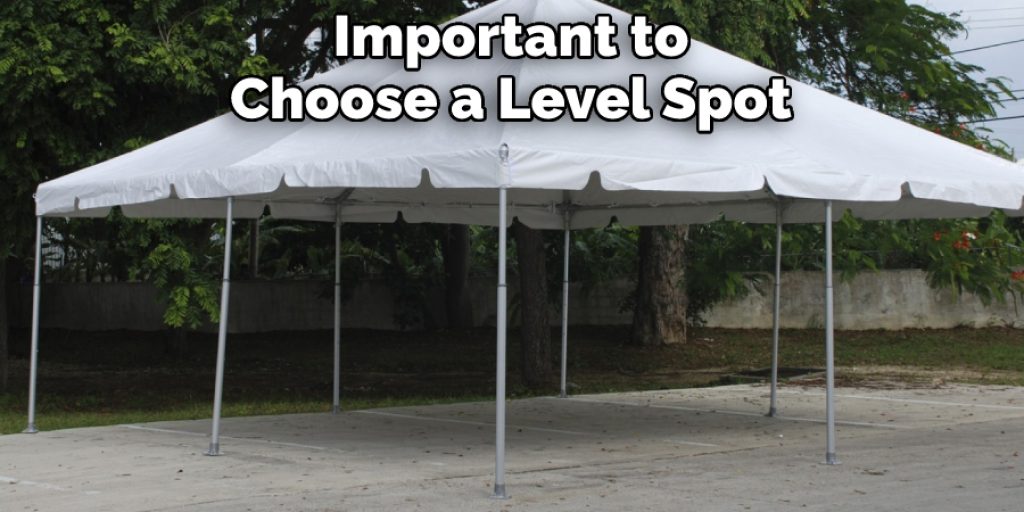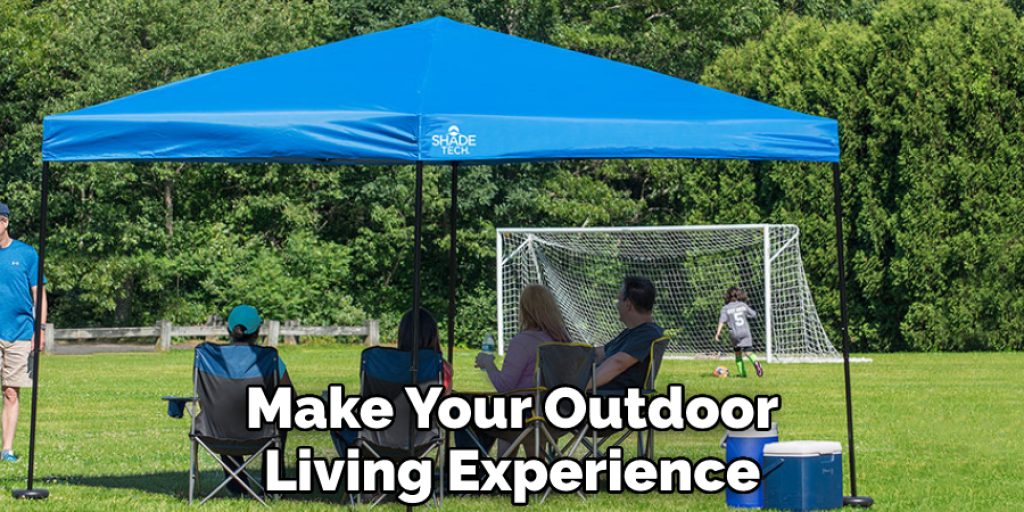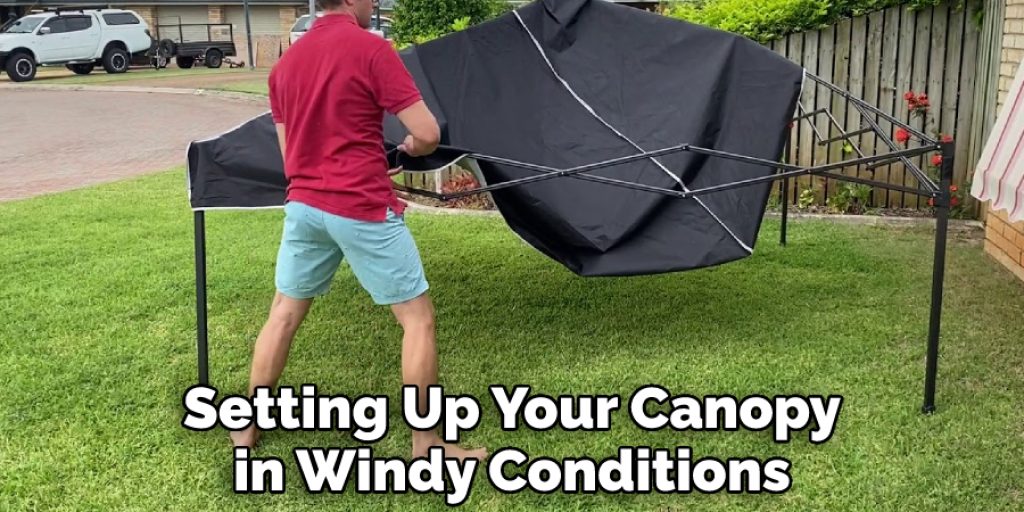How to Set up a Canopy by Yourself
Setting up a canopy by yourself can be intimidating, especially if you’ve never done it before. It seems like a daunting task, with all the pieces and parts that need to fit together just right in order for your canopy to function properly. However, this task isn’t as hard as it seems! In this post, we will walk through the step-by-step process of how to set up a canopy by yourself. Whether you need shade at a family barbecue or additional comfort while camping, setting up a canopy yourself is completely achievable – break out those tools and read on!

Can One Person Set up a Canopy Tent?
Yes, one person can set up a canopy tent fairly easily, depending on the size and type of shelter you’ve chosen. Most canopies are relatively small and lightweight enough to be installed by a single person with minimal effort. However, if the canopy is large or difficult to handle, it may be beneficial to enlist the help of a friend or partner.
When setting up your canopy, it is important to remember that you will need several items to get the job done properly. These include stakes, ropes, and pulleys, as well as extra poles or ribs if needed. Additionally, you may want to bring along a step ladder or sturdy chair in order to reach higher points on the structure.
Before you begin, make sure to read the instructions carefully and familiarize yourself with all of the necessary steps for a successful setup. Once you’ve done this, it’s time to begin assembling your canopy. Start by locating a level area of ground that is free from debris, such as sticks or stones. Next, lay out the canopy on the ground and remove any packaging. Be sure to check that all of the parts are accounted for and in good condition.
Next, attach the poles or ribs to the canopy frame using bolts or clamps, depending on your shelter’s design. Once this is done, carefully raise it off the ground and secure the poles in place with ropes or straps. Finally, install the stakes around the perimeter of the canopy and tie off any loose ends.
10 Methods How to Set up a Canopy by Yourself
1. Choose the Right Location.
When setting up a canopy, it is important to choose a level spot that is free from obstacles such as rocks or roots. The area should also be large enough to accommodate the size of the canopy. Ideally, the canopy should be placed away from trees to avoid any branches or debris interfering with it. If there is any chance of rain, it is best to choose an area with good drainage.

2. Clear the Area.
Once you have chosen the perfect spot for your canopy, it is important to clear the area of any debris, such as leaves or sticks. This will help to ensure that the canopy is stable and will not be blown over by the wind. You should also make sure that there are no underground power lines or other obstacles that could cause problems.
3. Assemble the Frame.
Most canopies come with an easy-to-assemble frame. Simply follow the instructions that come with the canopy to assemble the frame. If you are having trouble, there are plenty of online tutorials that can help. Once the frame is constructed, you will need to secure it in place. This can be done with stakes or weights. Stakes are great for grass or mud surfaces, while weights can be used on concrete or hard surfaces.
4. Attach the Fabric.
After the frame has been assembled, it is time to attach the fabric. Start by draping the fabric over the frame and then use zip ties or carabiners to secure it in place. Make sure that the fabric is tight so that it does not sag or billow in the wind. If using zip ties, make sure to use the proper size and strength ones for your canopy frame.
5. Weigh down the Corners.
In order to keep your canopy from blowing away, it is important to weigh down the corners with sandbags or weights. You can also use stakes to secure the canopy to the ground if there are no winds forecasted. Make sure to use sandbags or weights that are heavy enough so the canopy will not move in any direction. This step is important for ensuring that your canopy will stay in place and provide the best protection from any elements.

6. Add Lights and Decorations.
Once your canopy is set up, you can add lights and decorations to personalize it and make it more inviting. String lights around the perimeter of the canopy or hanging lanterns from the center point for a festive touch. You can also add garlands, streamers, or other decorations to give your space some extra pizazz! However, be sure to check the weight limits of your canopy before adding any additional decorations.
7. Install Privacy Screens.
If you want to keep your canopy area a bit more private, consider installing privacy screens on the sides. These are great for blocking out neighbors or providing an extra layer of protection from the elements. They usually come in rolls, so you’ll need to measure the length of your canopy and purchase enough privacy screen material accordingly.
You can then install them on the sides of your canopy using nails or screws. Make sure to use a level to make sure your panels are even and secure them tightly to your canopy frame. Once done, you’ll have a nice private spot to hang out in!
8. Set up Furniture and Accessories.
Now that your canopy is set up and ready to go, it’s time to add some comfortable seating and other accessories! Add tables, chairs, cushions, rugs, plants—whatever you need to make your space feel like home. You can also hang decorations or string lights to create a more festive atmosphere. To make sure your furniture and other elements are secured, use stakes or sandbags to anchor them in place. And don’t forget sunscreen and bug spray—especially if your canopy is outside!
9. Enjoy!
Once everything is in place, all that’s left to do is enjoy your cozy new space! Grab a book or invite friends over for dinner—no matter what you choose to do, you can be sure that your canopy setup will make your outdoor living experience even better. Don’t forget to take regular maintenance into account. Check your canopy regularly for any damage or hazards, and if need be, make sure to replace or repair any part of the setup. With these simple steps, you’ll be able to enjoy a canopy for years to come!

10. Take It down and Store It Away Properly.
When the time comes to take down your canopy, make sure to follow the instructions provided by the manufacturer for safe storage. This will help ensure that your canopy stays in good condition for years to come! However, some steps that you can take to store your canopy properly include disassembling it and folding away the fabric. Make sure to also clean your canopy before you fold it away.
Use a damp cloth and mild detergent to clean off any dirt, mud, or debris that may have accumulated on the fabric. Once the canopy is clean and dry, fold it away and store it in a cool, dry place until you are ready to set it up again.
By following these ten simple steps, you can easily set up a canopy by yourself in no time! From choosing the right location to adding furniture and decorations, there are plenty of ways to make your canopy setup unique and special. With some patience and effort, you’ll be able to enjoy your outdoor space even more. So don’t wait—start setting up your canopy today!
You Can Check It Out to Keep Canopy from Blowing Away at Beach
How Much Weight Do You Need to Hold a Canopy down?
The weight you need to hold down your canopy will depend largely on the size of the canopy and how sturdy it is. Generally, a 10x10ft canopy can be securely fastened to the ground with just 4 anchors and some rope or bungee cords. You’ll want to choose anchors that are adequate for securing your canopy in windy conditions. When in doubt, opt for heavier anchors that can securely hold down your canopy even in windy conditions.
If you want to be extra cautious, you can use more anchors or increase the weight of your anchors. Always make sure your canopy is securely attached to the ground with enough rope, and tighten each rope as much as possible so that they are secure. Additionally, you can use sandbags or weights to help add extra stability to the canopy if needed.
When setting up your canopy in windy conditions, it’s important to take extra precautions to make sure the weight you’re using is enough to secure the canopy firmly against strong gusts of wind. If you’re unsure, consult a professional for advice to make sure your canopy is properly installed and anchored.

Conclusion
Canopy tents are great for protecting you from the sun and giving you a shady spot to relax. They’re also perfect for parties, weddings, and other events. If you’re thinking about getting a canopy tent, consider setting it up yourself. It’s not as difficult as it seems, and you can save money by doing it yourself. Follow these steps, and you’ll have your canopy set up in no time. Thanks for reading our blog post on how to set up a canopy by yourself! We hope you found it helpful and informative. Happy Canopying!




